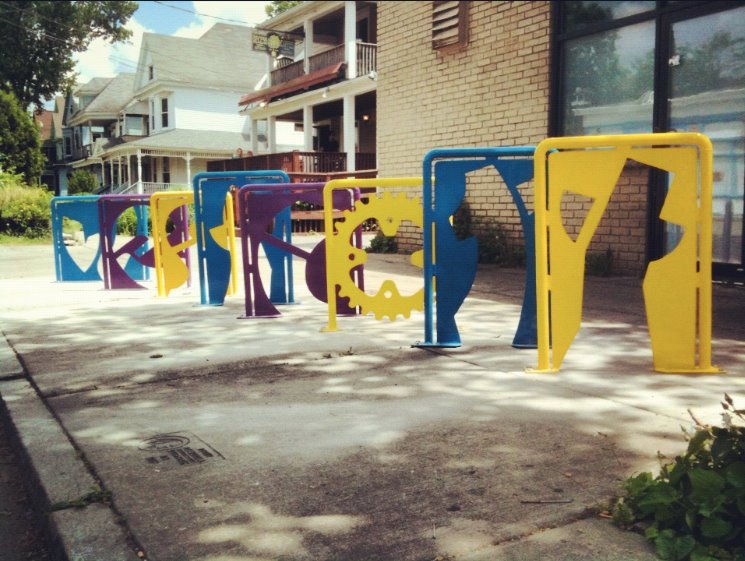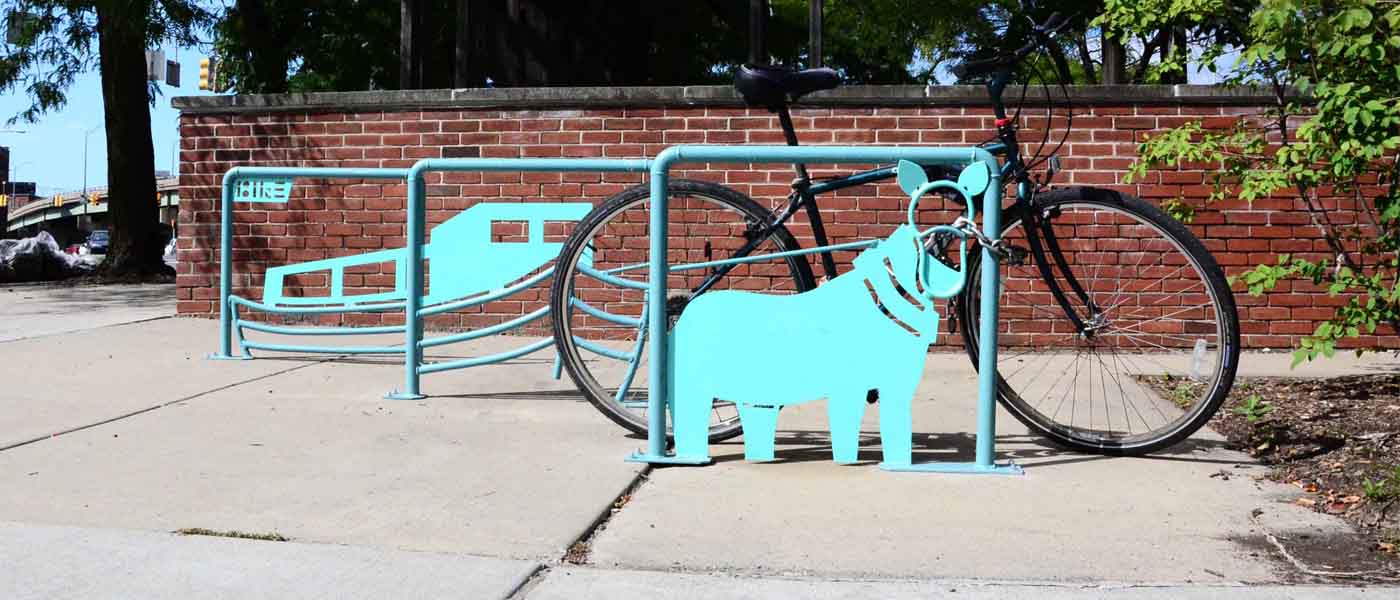This week’s blog post is by Daniel Ward, curator at the Erie Canal Museum and current chair of the Syracuse public art commission.
Syracuse has long been a place known for public art. The city holds an amazing range of statuary in its inventory. During the late twentieth century a few murals were added to the streetscape. At the beginning of the 21st century interest in both producing and enjoying public art led Syracusans and, eventually, city government to look to other cities, where public art was becoming a driver of revitalization efforts.
Travelers returning to Syracuse, from places like Philadelphia, wondered what it would take for their home to have beautiful murals and intriguing sculptures along its rights of way and in public spaces. Something of a public art movement arose in Syracuse, led in part by artists and groups like the 40 Below Public Arts Taskforce.
 One issue that was immediately clear was that there were no streamlined and accessible processes or procedures for artists to install work on public property. After much advocacy and discussion, Syracuse’s mayor and common council passed the city’s first public art ordinance in 2007. This established the public art commission and a staff position for a public art coordinator to encourage and nurture public art.
The ordinance defines public art as “all forms of visual art that do not constitute a sign . . . located within the City right-of-way on public land owned by the City of Syracuse.” Additionally, all murals – even if produced on private property – fall under the jurisdiction of the public art commission. The ordinance charges the public art commission with considering artistic merit and intention, local significance and accessibility to the public, and safety and durability so that artistic form is of the highest quality and represents the broadest range of expression.
In order to create a cohesive and curated municipal public art program, the public art commission established four goals to be included in Syracuse’s comprehensive plan.
These goals are:
One issue that was immediately clear was that there were no streamlined and accessible processes or procedures for artists to install work on public property. After much advocacy and discussion, Syracuse’s mayor and common council passed the city’s first public art ordinance in 2007. This established the public art commission and a staff position for a public art coordinator to encourage and nurture public art.
The ordinance defines public art as “all forms of visual art that do not constitute a sign . . . located within the City right-of-way on public land owned by the City of Syracuse.” Additionally, all murals – even if produced on private property – fall under the jurisdiction of the public art commission. The ordinance charges the public art commission with considering artistic merit and intention, local significance and accessibility to the public, and safety and durability so that artistic form is of the highest quality and represents the broadest range of expression.
In order to create a cohesive and curated municipal public art program, the public art commission established four goals to be included in Syracuse’s comprehensive plan.
These goals are:

 One issue that was immediately clear was that there were no streamlined and accessible processes or procedures for artists to install work on public property. After much advocacy and discussion, Syracuse’s mayor and common council passed the city’s first public art ordinance in 2007. This established the public art commission and a staff position for a public art coordinator to encourage and nurture public art.
The ordinance defines public art as “all forms of visual art that do not constitute a sign . . . located within the City right-of-way on public land owned by the City of Syracuse.” Additionally, all murals – even if produced on private property – fall under the jurisdiction of the public art commission. The ordinance charges the public art commission with considering artistic merit and intention, local significance and accessibility to the public, and safety and durability so that artistic form is of the highest quality and represents the broadest range of expression.
In order to create a cohesive and curated municipal public art program, the public art commission established four goals to be included in Syracuse’s comprehensive plan.
These goals are:
One issue that was immediately clear was that there were no streamlined and accessible processes or procedures for artists to install work on public property. After much advocacy and discussion, Syracuse’s mayor and common council passed the city’s first public art ordinance in 2007. This established the public art commission and a staff position for a public art coordinator to encourage and nurture public art.
The ordinance defines public art as “all forms of visual art that do not constitute a sign . . . located within the City right-of-way on public land owned by the City of Syracuse.” Additionally, all murals – even if produced on private property – fall under the jurisdiction of the public art commission. The ordinance charges the public art commission with considering artistic merit and intention, local significance and accessibility to the public, and safety and durability so that artistic form is of the highest quality and represents the broadest range of expression.
In order to create a cohesive and curated municipal public art program, the public art commission established four goals to be included in Syracuse’s comprehensive plan.
These goals are:
- to ensure and celebrate the diversity of public art in the city.
- to make public art a community priority in Syracuse.
- to capitalize on the economic opportunities associated with public art.
- to establish downtown Syracuse as the public art showcase of the region.










